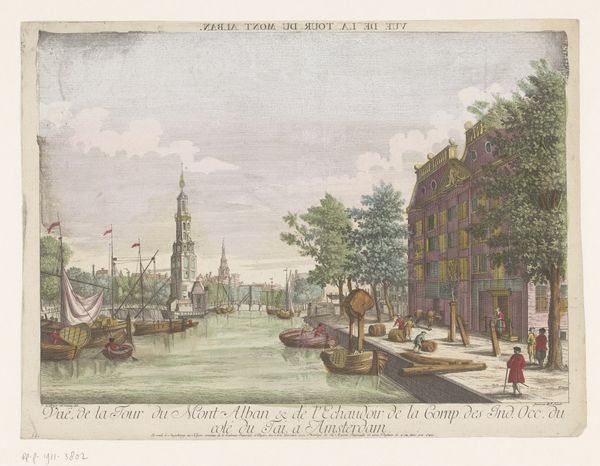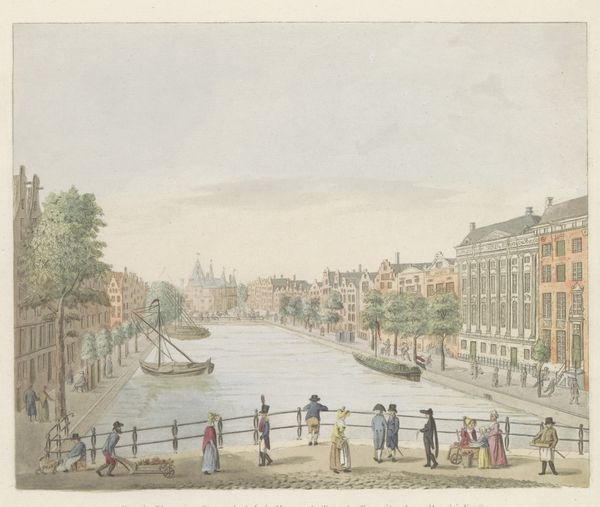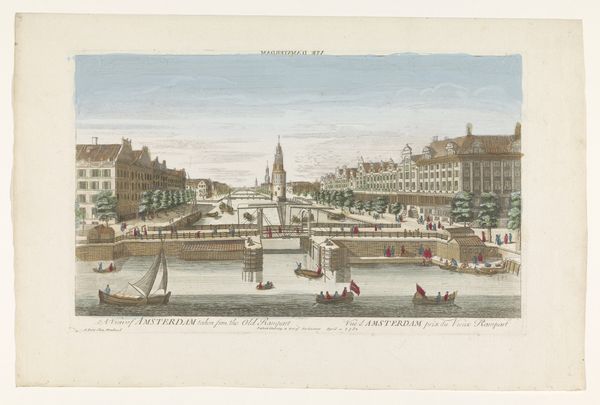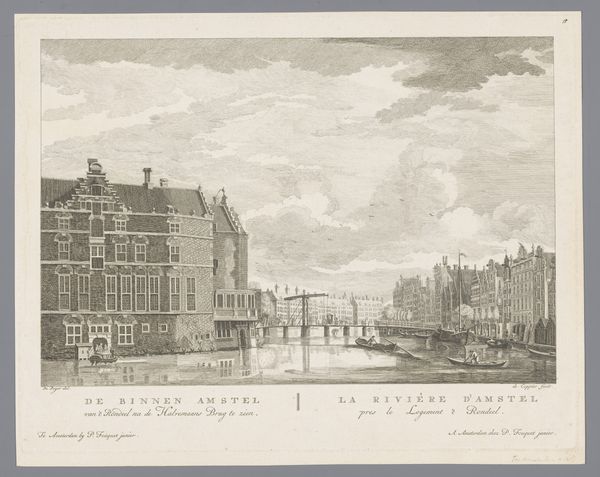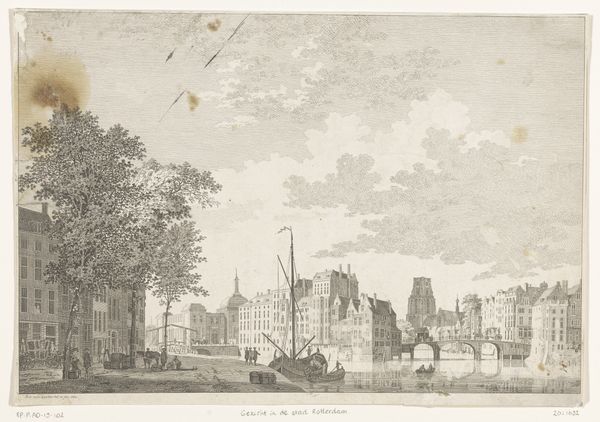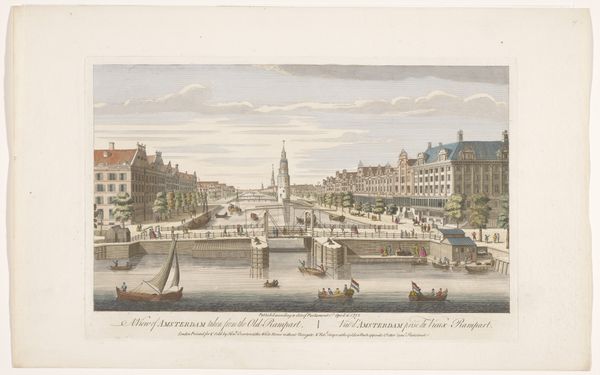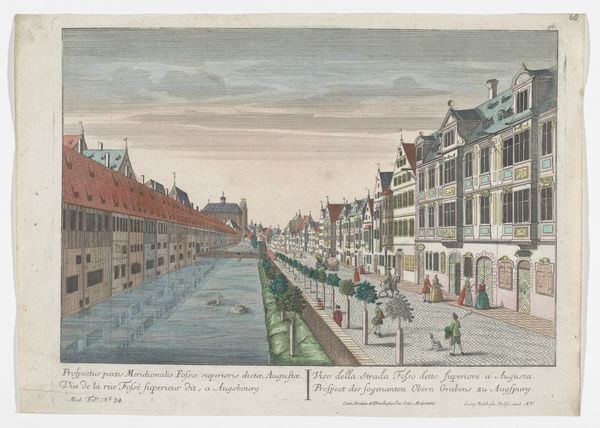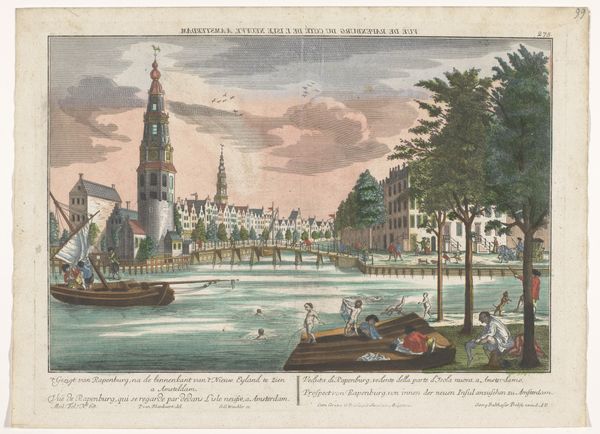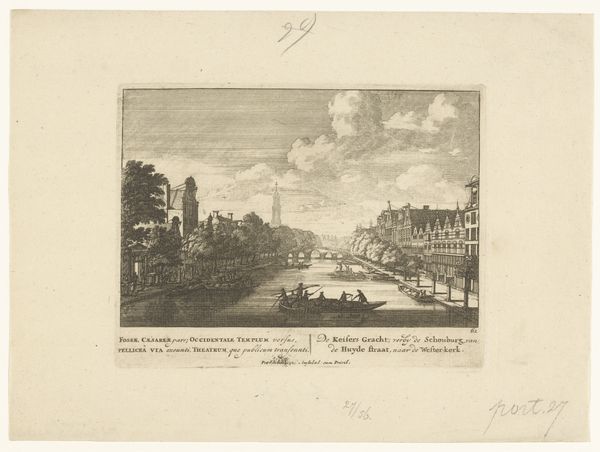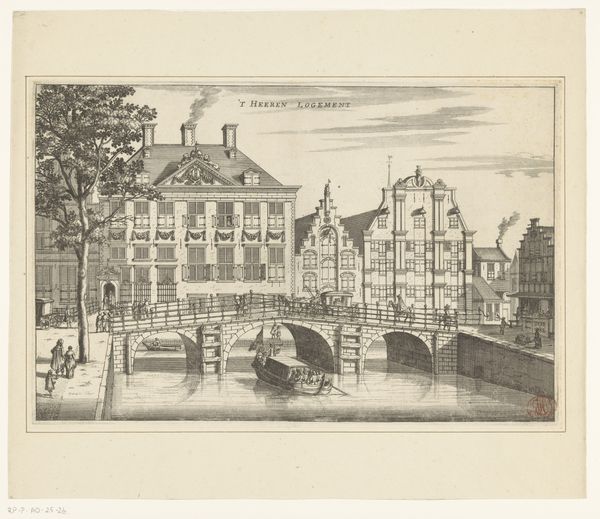
painting, watercolor
#
dutch-golden-age
#
painting
#
watercolor
#
cityscape
#
genre-painting
#
watercolor
Dimensions: height 292 mm, width 419 mm
Copyright: Rijks Museum: Open Domain
Curator: Before us is an 18th-century watercolor, "Gezicht op de Montelbaanstoren en de Binnenkant te Amsterdam," found at the Rijksmuseum. The artwork offers a view of Amsterdam with the Montelbaanstoren tower prominently featured. Editor: My first impression is one of placid order. There's a subdued palette, a structured arrangement of buildings, and figures positioned to emphasize perspective, really evoking the measured lifestyle of the Dutch Golden Age. Curator: Indeed. The watercolor medium allows for subtle gradations in tone. Note how the buildings reflect the light, their materiality captured through delicate washes and precise linework, providing valuable insight into the social setting. It's less about raw emotionality, I'd say, and more a measured articulation of the world. Editor: Yet, consider the physical effort expended, and the source of materials. We see the application of watercolor, each layer built meticulously to achieve the light effects, pigments that had to be ground. How was the paper sourced? What labor was involved in creating a vista that reflects social stature? The very making and viewing of such an image speaks of leisure supported by invisible labor. Curator: Of course, materials and making underpin any artwork. But I argue that in this piece, these elements primarily function to convey a visual structure and evoke harmony. The balanced composition, the careful interplay of architectural forms, directs our gaze, and, thus, influences our perception and understanding. The medium serves form. Editor: I’d rather argue that this tranquil vista normalizes social and economic hierarchies through what is omitted and shown. Whose labor, commerce, and colonial exploits enabled Amsterdam's gilded calm? Are we to merely admire picturesque waterways without considering those unseen forces? Curator: Point taken, although, to fixate solely on unrepresented aspects overshadows other virtues. Take for instance, the spatial articulation created by color intensity—the foreground’s precision recedes towards lighter washes in the background to signify distance, contributing towards an overriding sense of serenity and reasoned vision. Editor: Precisely, reasoned to whose advantage and obscured with tranquil art? In acknowledging this 18th-century vision, shouldn’t we investigate the labor that generated and maintained this vision? It's essential to view this art with an acute consciousness of socio-economic contexts that produced it. Curator: Perhaps this work challenges us, simultaneously prompting both refined visual experience and mindful consideration of complex narratives. Editor: Leaving one to ask, perhaps its apparent grace contains both revelation and strategic obfuscation?
Comments
No comments
Be the first to comment and join the conversation on the ultimate creative platform.
